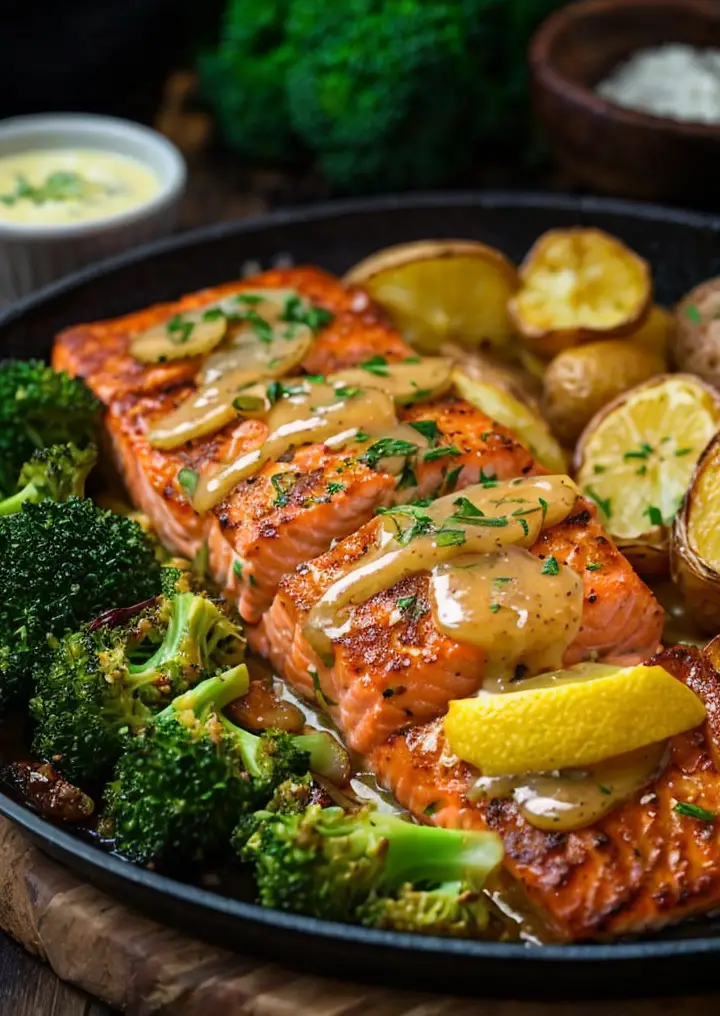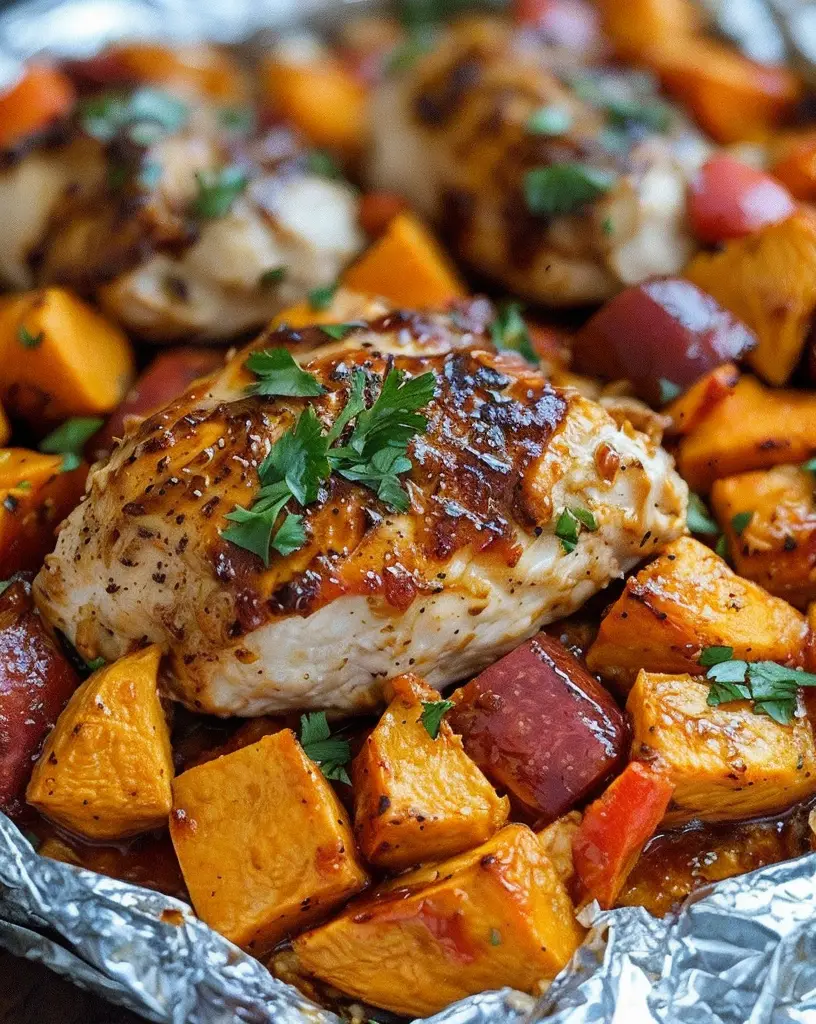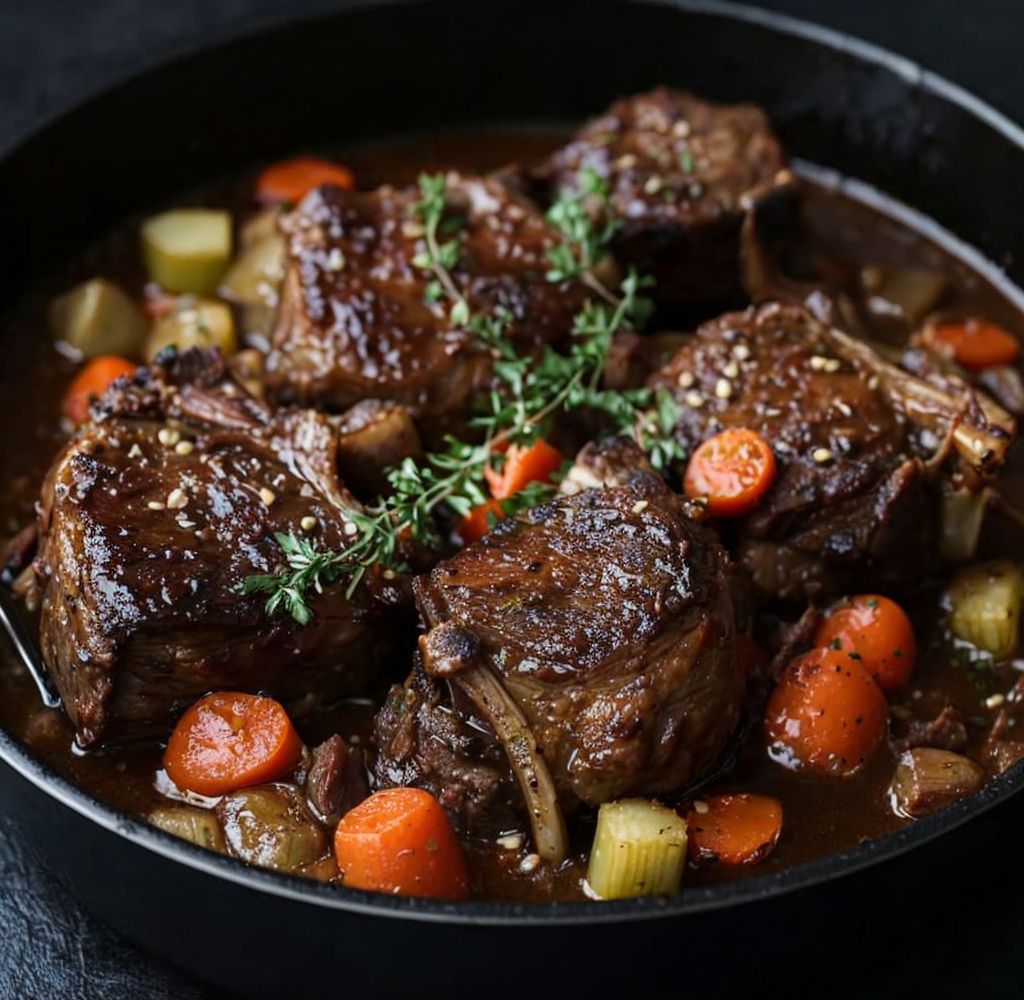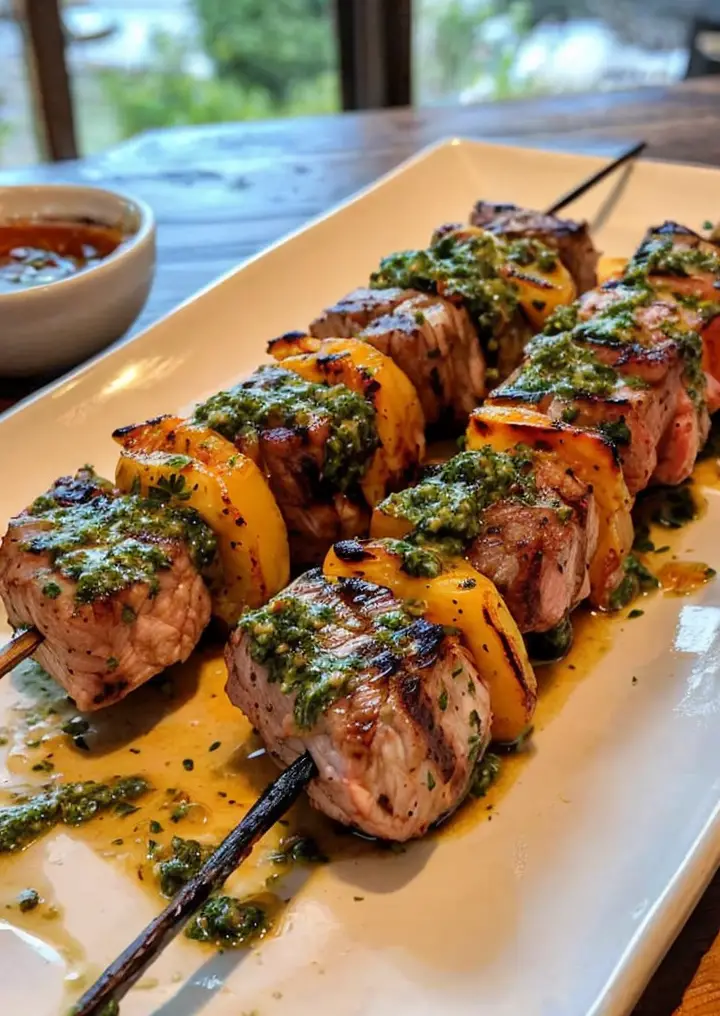Lemon Salmon with Crispy Potatoes and Broccoli: A Deliciously Healthy Dinner
Imagine a vibrant plate filled with succulent lemon salmon, perfectly crisped potatoes, and steamed broccoli artfully arranged to catch the eye. The lively flavors invite you to dive in, offering a refreshing burst of citrus that dances on your palate while the texture of the salmon melts tenderly in your mouth. This Lemon Salmon with Crispy Potatoes and Broccoli is not only visually appealing but also a culinary delight that combines nutrition with flavor, making it a go-to recipe for family dinners and gatherings.
Each bite brings together the delightful taste of pan-seared salmon, drizzled with a zesty lemon butter sauce, paired with golden, crisp potatoes that offer a satisfying crunch. The broccoli adds a nutritious green element, rounding off the meal with its fresh taste and crunchy texture. This dish perfectly balances health and taste, ensuring that you and your loved ones enjoy every bite.
Quick Recipe Highlights
- Flavor Profile: A delightful mix of zesty lemon and savory salmon harmonizes with the crispy potatoes and tender broccoli.
- Texture: The creamy salmon contrasts beautifully with crunchy potatoes and tender, crisp broccoli.
- Aroma: Inviting lemon scents merged with fresh herbs enhance the delectable aroma of this dish.
- Visual Appeal: A colorful presentation of bright greens, golden yellows, and rich pinks creates an irresistible plate.
- Skill Level Needed: This dish is suitable for all skill levels, making it accessible for novice cooks and experienced chefs alike.
- Special Equipment: A non-stick skillet and a baking sheet are essential for achieving the perfect crisp on the potatoes.
Recipe Overview
- Difficulty Level: This lemon salmon recipe is easy to follow, making it perfect for beginner cooks. With clear steps, the dish comes together smoothly.
- Category: This meal fits beautifully into dinner categories, ideal for family gatherings or a satisfying weeknight meal.
- Cuisine: Rooted in Mediterranean influences, thanks to its use of olive oil, lemon, and fresh veggies, this recipe embraces wholesome flavors.
- Cost: With affordable ingredients that are easily accessible, this dish offers great value without compromising on flavor or nutrition.
- Season: Lemon Salmon is a fantastic year-round dish that can be enjoyed in any season, particularly during spring and summer for its freshness.
- Occasion: This recipe is perfect for various occasions, from casual family dinners to more upscale gatherings.
Why You’ll Love This Recipe
The taste of Lemon Salmon with Crispy Potatoes and Broccoli is utterly compelling. The rich, buttery flavor of the salmon blends beautifully with the acidity of the lemon, enhancing the fresh, savory elements without overpowering them. Each bite is a rich combination of flavors that appeals to both children and adults. The texture remains varied throughout the dish, from the crunch of the potatoes to the softness of the fish, offering an exciting eating experience.
Convenience is another major selling point of this meal. With a total preparation and cooking time of just 40 minutes, you can serve a wholesome dinner without spending all evening in the kitchen. The simplicity of the steps allows for a relaxed cooking experience, making it perfect for busy weeknights when you still want something impressive to serve.
Health benefits abound in this recipe. Salmon is an excellent source of Omega-3 fatty acids, which are essential for heart health. Broccoli adds vitamins K and C to the mix, forming a meal that is not only delicious but also nourishing. Including crispy potatoes provides necessary carbohydrates, making this dish a balanced option for anyone seeking nutritious meals.
There’s a social aspect wrapped up in this recipe as well. Preparing and sharing this meal can be a delightful experience with family or friends. The vibrant colors and flavors invite conversation and enjoyment at the dinner table, fostering a sense of community and togetherness.
Cost-effectiveness makes this recipe an even more desirable option. With ingredients that are not only budget-friendly but also versatile, you can use leftovers for other meals throughout the week. With just a few simple ingredients, you’re able to create a gourmet-quality dish at home.
Historical Background and Cultural Significance
The origins of salmon as a staple food trace back to ancient cultures along coastal regions. These societies understood the importance of nutritious seafood as part of their daily sustenance and traditions. The infusion of lemon in cooking has Mediterranean roots, where the balance of acidity is valued to elevate flavors in various dishes.
Culturally, fish dishes are often celebrated in numerous cuisines around the world. Salmon’s rich taste and versatility have made it a prime candidate for countless adaptations and variations. The balance of lemon and salmon reflects the typical Mediterranean focus on fresh, wholesome ingredients and seasonal produce.
Over the years, the recipe for lemon salmon has evolved into different forms, incorporating various herbs and spices, adapting to regional preferences and ingredient availability. This dish reflects the dynamic nature of cooking, where traditional recipes meet contemporary tastes and preferences, continuing to evolve with time.
Regional variations abound, with different culinary traditions incorporating local flavors and techniques into salmon recipes. From Asian-style grilled salmon infused with ginger and sesame to Scandinavian preparations that celebrate dill, there are endless possibilities to explore within this beloved dish.
Ingredient Deep Dive
Salmon: Salmon is not just a delicious fish; it has cultural significance spanning many ancient civilizations. Known for its rich flavor and high nutrient content, it serves as a symbol of prosperity in many indigenous populations. Nutritionally, salmon is high in Omega-3 fatty acids, protein, and essential vitamins. When selecting salmon, look for firm, shiny fillets and avoid those with dark spots. For storage, keep it refrigerated for up to two days or freeze it for longer preservation.
Potatoes: Potatoes have a rich history, first cultivated in Peru and later spreading globally. They are a versatile staple in many diets, praised for their affordability and satiety. Potatoes are a great source of carbohydrates, Vitamin C, and potassium. Choose potatoes that are smooth and firm to the touch, avoiding any soft or sprouting ones. For freshness, store them in a cool, dark place. You can substitute regular potatoes with sweet potatoes for a twist on the dish.
Broccoli: Broccoli, part of the cruciferous family, boasts an interesting history rooted in the Mediterranean. Known for its cancer-fighting properties, it holds significant nutritional value, being rich in vitamins C, K, and fiber. When selecting broccoli, look for tight, dark green florets and avoid any with yellowing. Store broccoli in the refrigerator for up to a week, and consider blanching it before freezing to retain its color and nutrients.
Common Mistakes to Avoid
- Choosing the wrong cut of salmon: Opt for fresh salmon fillets, avoiding frozen or previously thawed, which may alter texture and taste.
- Overcooking the salmon: Salmon should be cooked to a medium level, resulting in a juicy texture rather than dry and flaky.
- Skipping seasoning: Proper seasoning enhances the flavors; don’t shy away from salt, pepper, and even a dash of garlic for added depth.
- Ignoring potato size: Ensure potato pieces are uniform in size for even cooking; larger pieces will take longer to crisp up.
- Not preheating the skillet: Cook the salmon on a preheated skillet to achieve that sought-after crust; a cold pan can ruin texture.
- Overcrowding the pan: If too many ingredients are in one pan, they may steam instead of crisp; it’s better to cook in batches if necessary.
- Rushing the cooking process: Give the ingredients time to develop flavors and achieve a perfect caramelization.
- Neglecting to zest the lemon: Lemon zest enhances the flavor profile significantly, so incorporate it for an added brightness.
- Removing the broccoli too early: Broccoli should be steamed just until tender but still vibrant; overcooking can lead to mushiness.
- Forgetting about resting time: Allowing salmon to rest after cooking helps to redistribute the juices for a more tender bite.
Essential Techniques
Pan-searing salmon: This technique is essential for creating a beautifully browned exterior while maintaining moist, flaky flesh inside. Start by ensuring your skillet is hot, and place the salmon skin-side down for the best results. Avoid moving it too much, allowing a crust to form. The visual cue for doneness includes a change in color from dark pink to a lighter hue as it cooks through.
Making crispy potatoes: To achieve the ultimate crispiness, it’s crucial to cut potatoes into even pieces and boil them briefly before frying. After boiling, ensure you dry them thoroughly; excess moisture can lead to sogginess. Flash frying them in hot oil creates a delightful texture. Use visual cues such as a golden color and audible crunch before removing from the heat.
Pro Tips for Perfect Lemon Salmon with Crispy Potatoes and Broccoli
Utilize fresh ingredients for the best flavor; fresh salmon and seasonal vegetables can elevate your dish significantly.
Consider marinating the salmon in lemon juice and herbs for an extra flavor boost; even 30 minutes will impart a lovely aroma.
Opt for Yukon gold potatoes; their creamy texture is ideal for achieving crispy golden results.
Experiment with different herbs, such as dill or parsley, for varied flavor profiles; these herbs pair wonderfully with salmon.
For a twist, add garlic cloves while roasting potatoes to infuse beautiful depth and fragrance.
Cook the broccoli separately to maintain ideal texture; overcooked broccoli can be unappealing and lose essential nutrients.
Ensure to rest the salmon before cutting; this redistributes the juices, leading to a more flavorful and moist piece.
Don’t waste citrus: use leftover lemon zest in other dishes to make the most of your ingredients.
Variations and Adaptations
Regional variations: Explore miso-marinated salmon for a Japanese twist or an herb-crusted version for a Mediterranean flair. These adaptations introduce exciting new flavor profiles to your dish.
Seasonal adaptations: Swap out broccoli for seasonal greens like asparagus in the spring or Brussels sprouts in the fall; these changes keep the dish fresh and exciting year-round.
Dietary modifications: Make this meal entirely gluten-free by ensuring that no processed sauces are included. You can also replace the potatoes with a low-carb alternative like cauliflower for a keto-friendly version.
Flavor variations: For spice lovers, add a pinch of chili flakes to the lemon butter sauce or marinade; this brings in a delightful heat that complements the richness of the salmon.
Texture modifications: Instead of oven-roasting, try grilling the salmon and potatoes for a smoky flavor and excitement in texture, enhancing the overall dish.
Presentation alternatives: For a gourmet touch, serve the dish on a large platter, drizzling the lemon butter over the whole meal for an upscale dining experience.
Serving and Presentation Guide
When plating, ensure you create a thoughtful arrangement of salmon, where each fillet slightly overlaps on one side. Accompany with the crispy potatoes on one side and a generous heap of broccoli on the other. Garnish with freshly chopped herbs, such as parsley or dill, for pop and aroma. A lemon wedge on the side brightens the presentation and allows diners to customize the flavor.
Consider using white or colorful plates that contrast with the vibrant colors of the dish, enhancing visual appeal. For an added flourish, drizzle a bit of the lemon butter sauce over the potatoes and broccoli just before serving for a glossy finish.
Temperature is crucial; serve the salmon immediately upon cooking to ensure it maintains its juicy texture. Plate and serve while hot for the best possible experience. Portion control is also essential; aim for about 4-6 ounces of salmon per person, with a generous serving of vegetables to create a balanced plate.
Wine and Beverage Pairing
For wine pairings, a crisp Sauvignon Blanc or a light Pinot Grigio complements the lemony salmon beautifully, cut through richness, enhancing the fresh flavors of the dish. A chilled Chardonnay can also work wonderfully, contributing a creamy finish that pairs well with salmon.
Non-alcoholic alternatives include sparkling water infused with citrus for a refreshing touch, making the meal feel bright and lively. Herbal teas, particularly chamomile or green tea, can also work well, echoing the freshness of the dish.
If you’re looking to serve coffee with the meal, a light roast with citrus notes can sync delightfully with the lemon flavors. Make sure all beverages are served chilled or at the appropriate temperatures to enhance the overall dining experience.
Storage and Shelf Life
To maximize the longevity of your Lemon Salmon with Crispy Potatoes and Broccoli, store any leftovers in airtight containers. Refrigerate them promptly after cooling for up to three days. Ensure that the salmon is stored separately from potatoes and broccoli, as they can absorb moisture and ruin texture.
For longer storage, consider freezing the salmon separately; it can last up to three months in the freezer. Reheat gently in the oven or on a stovetop to avoid overcooking. Be cautious with reheating broccoli, as it can become mushy; it’s best enjoyed freshly cooked.
Check for any signs of spoilage before consuming leftovers; salmon should not have an off smell, and the texture should remain firm. If potatoes have turned overly soft or mushy, it’s best to discard them for safety.
Make Ahead Strategies
To create a stress-free dinner, consider prepping the ingredients the day before. Cut the potatoes and broccoli, and store them in the fridge. Pre-marinate the salmon in lemon juice and herbs overnight for optimal flavor enhancement, allowing each bite to be infused with zest.
On the day of serving, all you need to do is cook the components. This reduces preparation time significantly and allows you to focus on bringing together the dish with perfection.
Another tip is to roast the potatoes in advance, allowing them to cool and then reheating them quickly in the oven to retain their crunch. As for the salmon, avoid cooking it until just before serving to guarantee freshness and quality.
Fresh elements like herbs or citrus can be added just before serving, ensuring they retain brightness and vibrancy, enhancing the meal’s freshness.
Scaling Instructions
Scaling your Lemon Salmon recipe up or down is easy! To halve the recipe, simply divide all ingredient quantities by two, adjusting cooking times as necessary to ensure that everything cooks evenly.
When doubling or tripling the dish, consider the size of your cooking equipment; you may need to cook in batches, especially for the salmon and potatoes to avoid overcrowding the pan.
Timing will adjust slightly since larger portions may require a bit longer in the oven or skillet, or may need to be done in steps to achieve that perfect crisp. Also, keep in mind that if you scale the recipe, tasting while cooking becomes crucial, as increased ingredients might require further seasoning.
Storing considerations are essential; more servings may mean larger containers, and ensuring you properly cool and store for future meals is important to maintain quality.
Nutritional Deep Dive
Analyzing the nutrition of Lemon Salmon with Crispy Potatoes and Broccoli reveals a well-rounded meal. A standard serving typically yields approximately 400-500 calories, depending on portion sizes. The salmon provides high-quality protein essential for tissue repair and muscle growth while delivering healthy fats.
For macronutrient breakdown, expect 30-35 grams of protein and a balanced amount of carbs, primarily from the potatoes which contribute around 45 grams. The combination of broccoli adds substantial dietary fiber, keeping the meal filling and aiding digestive health.
In terms of micronutrients, this dish provides significant vitamins such as B vitamins from the salmon, Vitamin C from the broccoli, and potassium and fiber from the potatoes. This makes it a valuable meal for overall health and wellbeing, supporting various bodily functions.
Consider portioning carefully if weight management is a focus. This recipe can be easily adjusted with more veggies and less oil to lower calorie count while keeping the flavor intact.
Dietary Adaptations
This Lemon Salmon recipe can easily be tailored to fit various dietary needs. For gluten-free diners, simply ensure that no sauces or additional ingredients contain gluten, making the dish safe for those with sensitivities.
Dairy-free eaters can skip any butter in the recipe and replace it with olive oil, providing a plant-based alternative while keeping the dish flavorful. For vegan adaptations, consider swapping salmon for a plant-based protein like marinated tofu or grilled eggplant.
A low-carb or keto-friendly version can be achieved by replacing potatoes with cauliflower or zucchini noodles, while still maintaining a satisfying, hearty aspect to the meal.
Paleo diet followers can indulge by ensuring the use of minimally processed ingredients and avoiding any dairy or grains.
Flavor variations can offer different twists on the recipe too; try spicing up the salmon with Cajun seasoning, or using different herbs to suit various dietary preferences.
Troubleshooting Guide
Encountering texture issues with salmon? If it appears dry, it may have been overcooked; use a thermometer to ensure it stays at 145°F internally for optimal doneness.
For flavor balance, if the dish feels lacking, consider adjusting seasoning levels, particularly salt and herbs, as they can enhance the overall flavor profile significantly.
If there are temperature problems, preheating your cooking surfaces is crucial; a cold oven or skillet can lead to uneven cooking results, affecting both texture and taste.
If you run into equipment challenges like a sticky pan, ensure it’s properly seasoned or use non-stick cookware for best results; this change will improve both cooking and clean-up.
Ingredient substitutions might lead to something unexpected; if an herb or spice is replaced, ensure it’s complimentary to the dish to preserve balance.
Lastly, if timing concerns arise, we recommend preparing all ingredients in advance to streamline cooking; it’s key for maintaining freshness and efficiency.
Recipe Success Stories
Community feedback on the Lemon Salmon with Crispy Potatoes and Broccoli has been overwhelmingly positive, with many sharing their successful adaptations. Whether it be through experimenting with different spices or side dishes, readers have personalized the recipe to great effect.
Several readers have shared success stories involving variations such as using sweet potatoes in place of standard ones, adding an element of sweetness that complements the salmon beautifully.
Adaptation tales often highlight readers’ creative substitutions for dietary restrictions, such as swapping the salmon for chickpeas, resulting in a delightful vegan alternative that still carries the essence of the original dish.
Photography tips from readers suggest using bright, natural light to capture the dish’s vibrant colors, with creative angles that highlight the meal’s freshness and to engage the audience on social media.
With this recipe, many families have reported it becoming a weekly staple, lauding its ease and the wholesome nature of the meal which satisfies cravings without guilt.
Frequently Asked Questions
2. What are the best types of salmon for this dish? Both wild-caught and farmed salmon varieties work beautifully, with sockeye and king salmon being particularly flavorful.
3. How can I make the potatoes extra crispy? Boil them first, then dry and roast them at a high temperature to create the perfect crisp.
4. Can I prepare this dish in advance? While it’s best served fresh, you can prep the ingredients ahead of time and simply assemble before cooking.
5. What can I substitute for broccoli? Asparagus, green beans, or Brussels sprouts are great alternatives that cook similarly.
6. How do I reheat the leftovers without compromising quality? Gently reheating in the oven or on a skillet will preserve the texture much better than a microwave.
7. Is this dish suitable for meal prep? Yes! It actually reheats well and maintains a good taste, making it perfect for healthy meal prep.
8. Can I add other vegetables? Yes! Carrots, bell peppers, or zucchini would also pair well with this dish.
9. What’s the best way to store this meal? Store leftover potatoes, salmon, and broccoli in separate airtight containers to maintain freshness.
10. How can I boost the flavor further? Consider adding fresh herbs or items such as capers to intensify the sauce flavors.
Additional Resources
For those looking to expand their culinary repertoire, check out similar recipes that highlight fish, such as Garlic Butter Shrimp or Mediterranean Baked Cod. These options incorporate delightful seafood flavors with easy preparation, making them wonderful additions to any meal rotation.
Consider technique guides on how to properly handle and cook fish, as well as ingredient information that dives deeper into the nutritional aspects of seafood.
Enhance your kitchen with equipment recommendations such as quality non-stick pans or essential knives for efficient food prep.
To keep your meals exciting throughout the year, explore seasonal variations that maximize flavor and freshness while aligning with citrus seasons and available produce.
Join the Conversation
We invite you to share your Lemon Salmon success stories on social media! Tag us in your photos and let your community know how you personalized the recipe to fit your style.
Reception stories and reviews offer a glimpse into how others enjoyed the dish and provide great tips for those looking to try it for the first time.
Engage with fellow cooking enthusiasts and exchange suggestions or variations; together, we can celebrate all things culinary!
Your unique adaptations can inspire those around you, creating a community that values delicious and healthy cooking.
The Recipe
Lemon Salmon with Crispy Potatoes and Broccoli
Serves: 4
Prep Time: 15 mins
Cook Time: 25 mins
Total Time: 40 mins
Kitchen Equipment Needed
- Non-stick skillet
- Baking sheet
- Pot for boiling
- Cutting board
- Sharp knife
Ingredients
- 4 salmon fillets
- 2 medium Yukon gold potatoes, cut into wedges
- 2 cups broccoli florets
- 2 tablespoons olive oil
- 2 tablespoons unsalted butter
- Juice and zest of 1 lemon
- Salt and pepper, to taste
- Fresh herbs (optional, for garnish)
Directions
- Preheat the oven to 425°F (220°C).
- Boil the potato wedges for 5 minutes, then drain and dry thoroughly.
- Spread the potato wedges on a baking sheet, toss with olive oil, salt, and pepper, then roast for 20 minutes until crispy.
- Meanwhile, heat a non-stick skillet over medium heat with butter.
- Season salmon fillets with salt and pepper; when the skillet is hot, add salmon skin-side down.
- Cook for 4-5 minutes, then carefully flip and cook for another 3-4 minutes until just cooked through.
- In the last few minutes, steam or blanch the broccoli until bright green and tender.
- Drizzle lemon juice and zest over the salmon just before serving.
- Plate salmon with crispy potatoes and broccoli; garnish with fresh herbs if desired.
Recipe Notes
- For added flavor, marinate the salmon in lemon juice and herbs for 30 minutes prior to cooking.
- Feel free to use any seasonal vegetables or adjust vegetables according to preferences.
- This dish reheats well, making it self a great option for meal prep.




